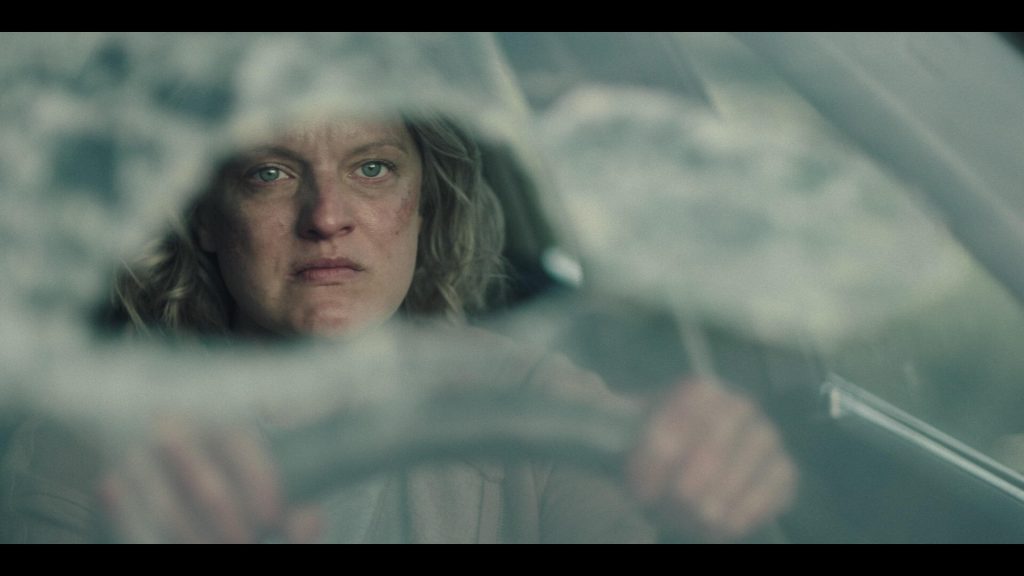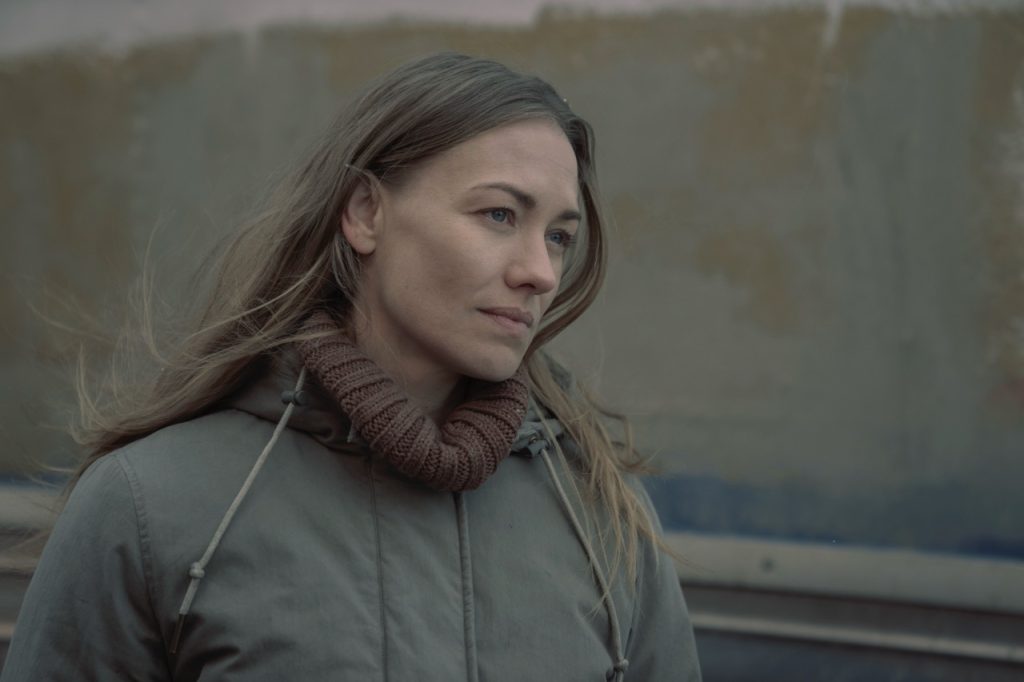
In the world of film and television, the makeup department’s job isn’t singular to creating polished beauty looks that one might wear on the streets. Instead, they have a bigger task at hand: to work in harmony with all the various departments that contribute to the picture and drive the storyline for viewers in cinemas and at home, fully immersing them.
It’s subtle. Sometimes, we can get too lost in the plot to notice the work that was put into perfecting the shot. From maintaining temporal continuity to emphasising a character’s emotional state, makeup departments on sets have been the invisible hand that helps create nuance and tension outside of the delivery of lines and cinematography. After all, when was the last time we paused to marvel at these minute details to realise that it took deliberate work to turn A-list stars—who probably have the best aestheticians and beauticians on speed dial—into your average Jane?
And yes, they do need to transform these figures we’ve come to associate with decadent campaign images and stylised red carpet moments into relatable, ordinary people, so we viewers can empathise with their hopes, dreams, and struggles. Whether it’s a dystopian piece or an action flick, the artists are part of driving the point home, and are just as important as set designers, costume designers, and lighting directors in worldbuilding. The best films and series ace in these areas too, and not just in the directing and scriptwriting categories, because the best stories are told when everything comes together. The work is, in fact, so important that there are entire categories in major award shows to honour outstanding achievements.
Clear as Day
Take Birds of Prey (and the Fantabulous Emancipation of One Harley Quinn), for instance, one of the prime examples of makeup and hair syncing with the storytelling. By design, the anti-hero is given an exaggerated makeup and hair look in her transformation into Harley Quinn (played by Margot Robbie). Her pigtails, a style typically stylised on children, clue in to a certain innocent naiveté. The coloured tips, dyed in red and blue, hint at the rebellious anarchist within. But that’s all canon, of course.


In the two-hour film itself, the audience is taken on Quinn’s non-linear emotional post-breakup journey. From recovery to self-discovery, including moments of hijinks, award-winning and prolific makeup artist Deborah LaMia Denaver, who headed the makeup department on the set, along with hairstylist Adruitha Lee, translated those experiences through hair and makeup. With the exposition, viewers see a pre-liberated Quinn. In the scene where she admits her new relationship status to the Black Canary (played by Jurnee Smollett), she is at her most downtrodden. Hair was made unkempt, eyes puffy, mascara smearing—all to signal her off-screen meltdown.
Despite winning Best Contemporary Makeup at the 2020 Makeup Artists & Hair Stylists Guild, there is scant conversation about Denaver’s work here—the world was shaken with a global pandemic a couple of months following its release. But she had previously worked with Robbie for I, Tonya. “Margot’s eyes smile, they’re built that way,” said Denaver. For that particular film, the makeup artist applied age makeup where her eyes and mouth were pulled down to show signs of age. “I took the corners of her eyes and used lash adhesive and just pulled them down to give them a little bit of a droop like Tonya had. Same thing with her mouth. I not only made her lips narrower, but I dragged down the corners of her mouth,” she told Vanity Fair. We imagine this scene in Birds of Prey also required similar intentional work to transform Margot Robbie’s Barbie-level beauty.

As Quinn attempts to move on with her life without The Joker, she cuts off her tinted hair tips, the very identifying marker that links the anti-hero to her relationship with him, aside from her iconic ‘J’ choker. Quinn also does away with her face-framing bangs, conveying a clearer vision of herself that is soon to follow. The choppy style, however, indicates that she is, quite literally, still rough around the edges. Even her makeup in this scene depicts her bruised ego, with Denaver designing the makeup look to include a lip deep plum shade to match her emotion.
But by the film’s end, a more light-hearted Quinn emerges as she reclaims her narrative. Her tattoos remain, because at the end of it all, she is still Harley Quinn, the anti-hero. The makeup and hair, however, turn softer. Denaver did away with the harsh, blackened waterline to create a softer gaze, and Lee diluted the dyed tips into a soft pastel tint. The character also, finally, in a figurative and literal way, lets her hair down for the first time in the entire film. Not only is she free from the agony of the separation and threats from enemies, but she also evolves to a point where she fully steps out of The Joker’s shadow, no longer playing his second fiddle.

All those fine details culminated in a cinematic piece that had viewers enthralled by Quinn’s transformation. And when splayed on the silver screen, these superficial cosmetic considerations made all the difference, making the audience a part of her world.
Look Closer
The same can be observed in serialised content as well. Implicit messaging is everywhere for viewers to decode, with makeup and hair being a part of the storytelling. The Handmaid’s Tale, which completed its run earlier this year, brings us into the totalitarian country of Gilead, where women, no matter their station, receive the short end of the stick. Here, Offred/June Osborne (played by Elizabeth Moss) and Serena Joy (played by Yvonne Strahovski) struggle for the upper hand, and the structure of the world offers very little room for personal expression—and much less a woman’s through cosmetics.
But despite the lack thereof, Emmy-nominated makeup artist Burton LeBlanc still put his best foot forward for the show. June, before the rise of Gilead, was her own autonomous person, the makeup artist made sure to translate this onto the screen. “In the beginning, her makeup is more natural. As her circumstances get worse with each season, her makeup reflects that with an even more distressed look. When she is crying or emotional that has to reflect in the makeup from scene to scene for continuity. I create wetness under the eyes with Egyptian Magic and use a red pencil in her waterline,” LeBlanc shared with On Makeup Magazine.

In her role as a Handmaid, her skin is made to appear bare, and “dry-looking”, according to LeBlanc, compared to her former self, to really drive home the message that she is living a life without luxuries in Gilead. “One other huge thing is lip balm or a lack of any kind of lustre to their lips. Taking away any shine or plumpness to their lips, so really just drying them out. When you look at June’s character, you see her lips are constantly cracked or really dry.”
There are, of course, women who find themselves in even more precarious situations than June does, like the Unpeople who got sent to the Colonies, where women are exploited as slave labourers working the polluted grounds. “There were different levels and variations of broken-down and distressed looks. Women who had just arrived or who had been there for a while would obviously have different degrees of the look while working in the toxic waste. They are also working in harsh outdoor elements, so that had to reflect in the makeup with wind and sunburnt looks. We used dirt, grime, tooth decay, illustrator palettes, and transfers and prosthetics for the more severe looks,” he said.
Finally, the Wives. Serena Joy, the Wife of a Commander, is posed as significantly better off than Offred/June, with her skin appearing softer and her visage less worn. “They are supposed to have on some makeup because, realistically, they have money and access to some basic product,” LeBlanc said to Refinery29. But her hair is put in a sleek chignon, tipping the compliant way of life a Wife is subjected to. Throughout the show, as the veneer begins to crack and as the drama is dialled up, the visual trajectory changes.


“There’s a softness to Serena that she is losing, and she looks less polished,” the makeup artist told Awards Watch. She is given exaggerated marionette lines to enhance her scowl. And by the end of the show, where she becomes a refugee, all the flairs are gone, with her facial contours emphasised to create a gaunt look as she loses access to her status.
That’s a Wrap
The art of makeup and hair design in film and television is truly a powerful vehicle in the toolbox of storytelling. With its ability to transform an actor, evoke emotion, and signal character development (without a single spoken word, at that), these often-overlooked subtleties are crucial elements that result in the world we witness on screen, creating immersive depth that hooks viewers, even on a subconscious level.“ It’s always a challenge to make the audience believe in the characters. As makeup artists, it’s our job to help give the actors the tools to visually create what they need to step into these characters,” Denaver said to On Makeup Magazine.
This story first appeared in GRAZIA Malaysia September 2025 issue.
READ MORE
